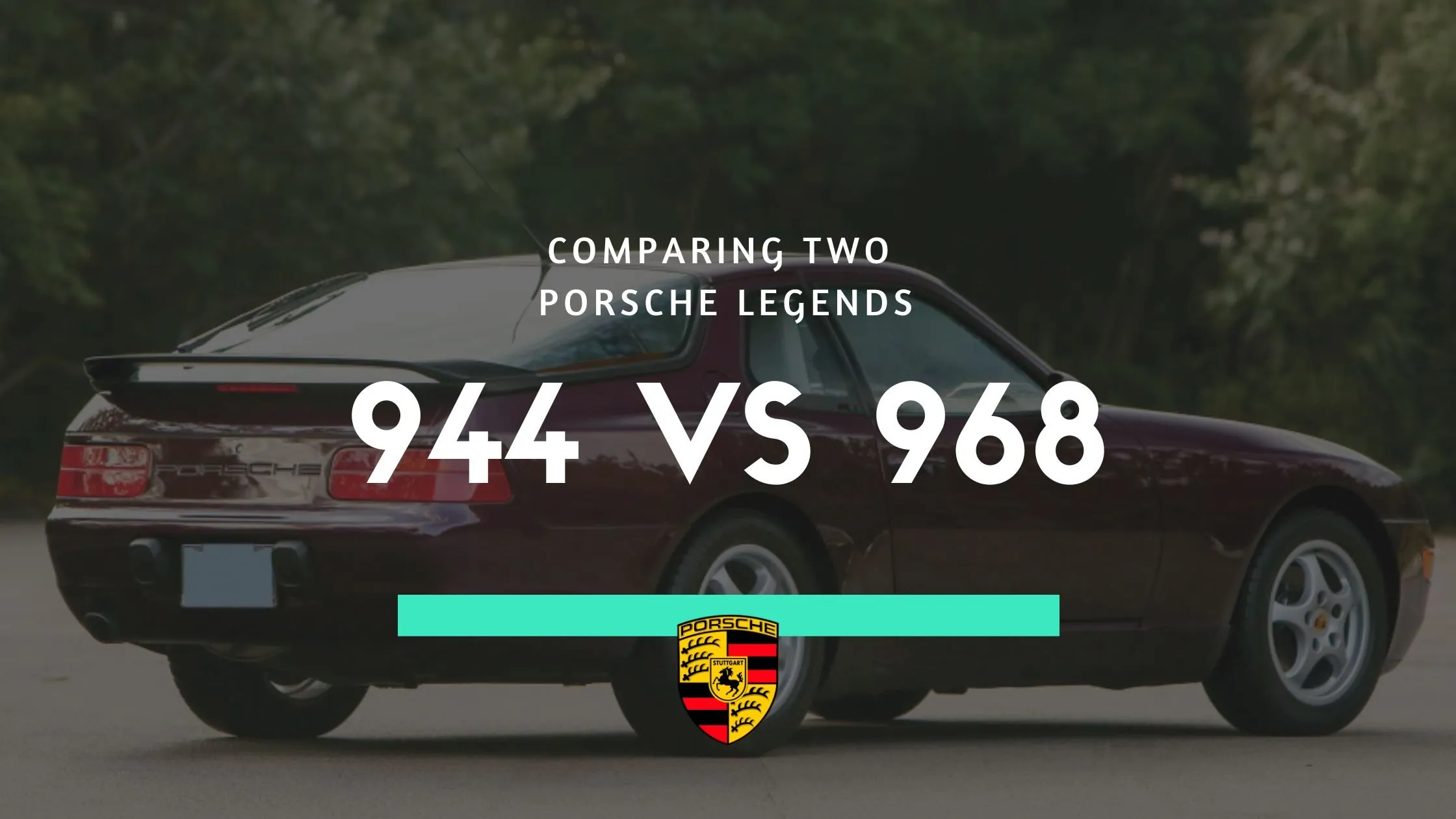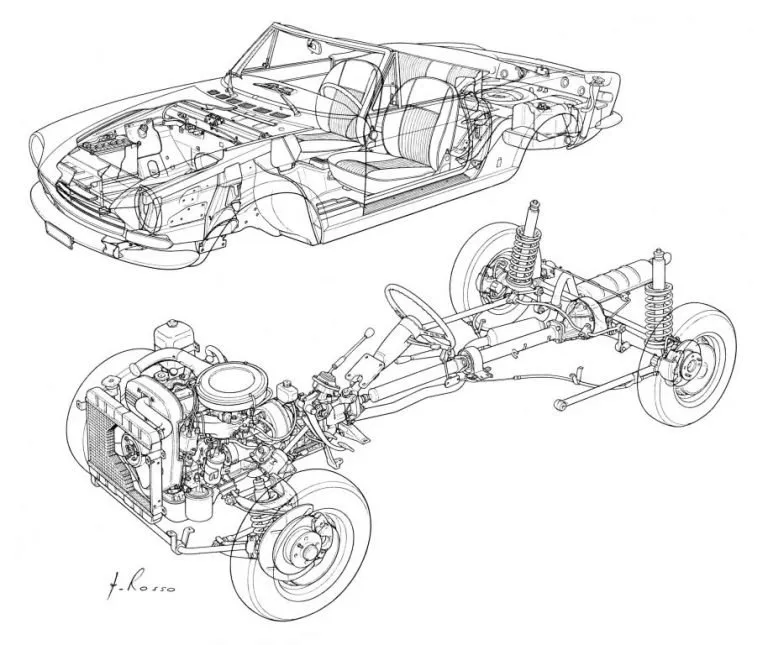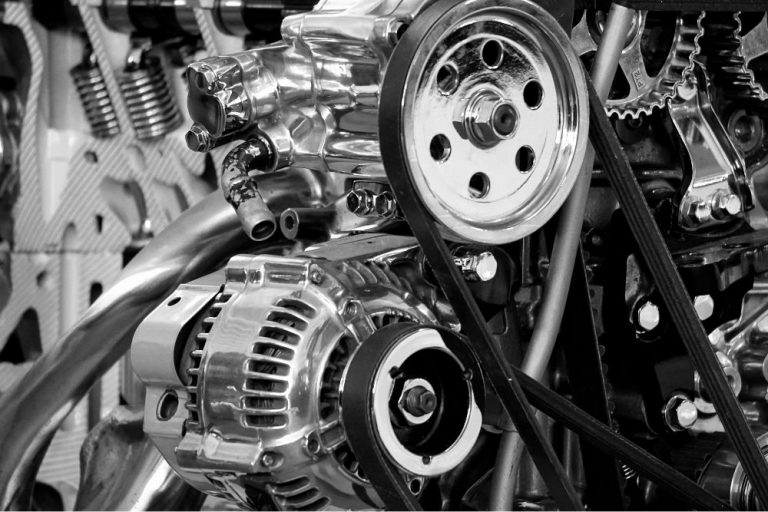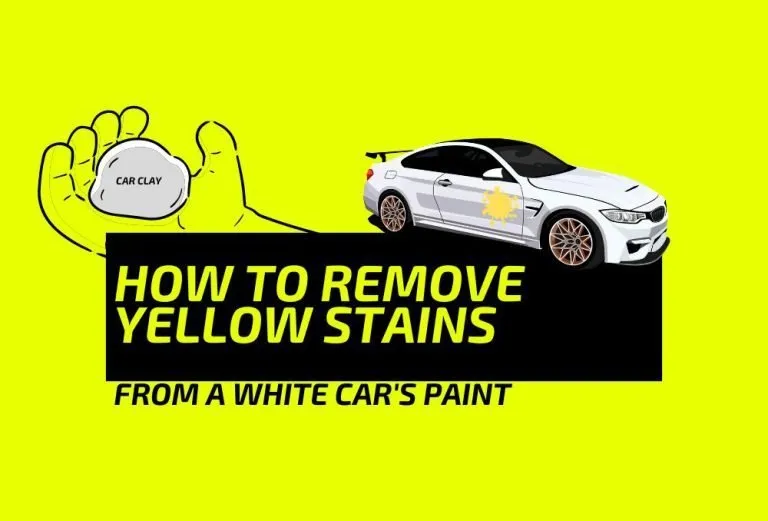Porsche 944 vs 968: The Ultimate Comparison
We often feel the need to pit one Porsche against the other in an effort to determine which is best overall. Why do we subject ourselves to this? Because we are Porsche enthusiasts, and wanting the best is the very reason we like Porsches in the first place.
This blog post will pit the Porsche 944 vs 968 to determine which is the better of the two cars. To do so, we will first talk a little about each car, what makes it unique, and how they differ, before directly comparing their power, performance, rarity, and retained value after all these years.
So, stick with us to find out who wins in a battle to the death (alright, maybe it isn’t quite that dramatic) between the Porsche 944 vs 968.
Highlights
- Comparison between the Porsche 944 vs 968, two classic Porsche models.
- Porsche 944 (1982-1991) features a 2.5-liter engine with up to 163 brake horsepower, 2-door coupe, and a top speed of 130-155 mph.
- Porsche 968 (1991-1995) is available as a 2-door coupe or convertible with a 3.0-liter engine producing 236 brake horsepower, 6-speed manual or 4-speed automatic transmission, and a top speed in the high 160s mph.
- The Porsche 968 has a more powerful engine and modern features like lightweight disc brakes, but the Porsche 944 has its unique charm and driving experience.
- The rarity of the 968 makes it harder to find, especially special editions like the Porsche 968 Clubsport.
- The choice between the two models ultimately depends on personal preferences and priorities, with some enthusiasts valuing the fun and character of the Porsche 944 despite its lower power.
The Porsche 944
The Porsche 944 ran from 1982 until about 1991 and was made exclusively in the 2-door coupe style throughout its entire life. With a 2.5-liter engine capable of producing up to 163 brake horsepower, the Porsche 944 was quite impressive for a standard production car in its day.
The Turbo model could bump you up to a whopping 217 brake horsepower and came with a three or 4-speed automatic transmission, whereas the standard 944 only came with a 5-speed manual or the 3-speed automatic.
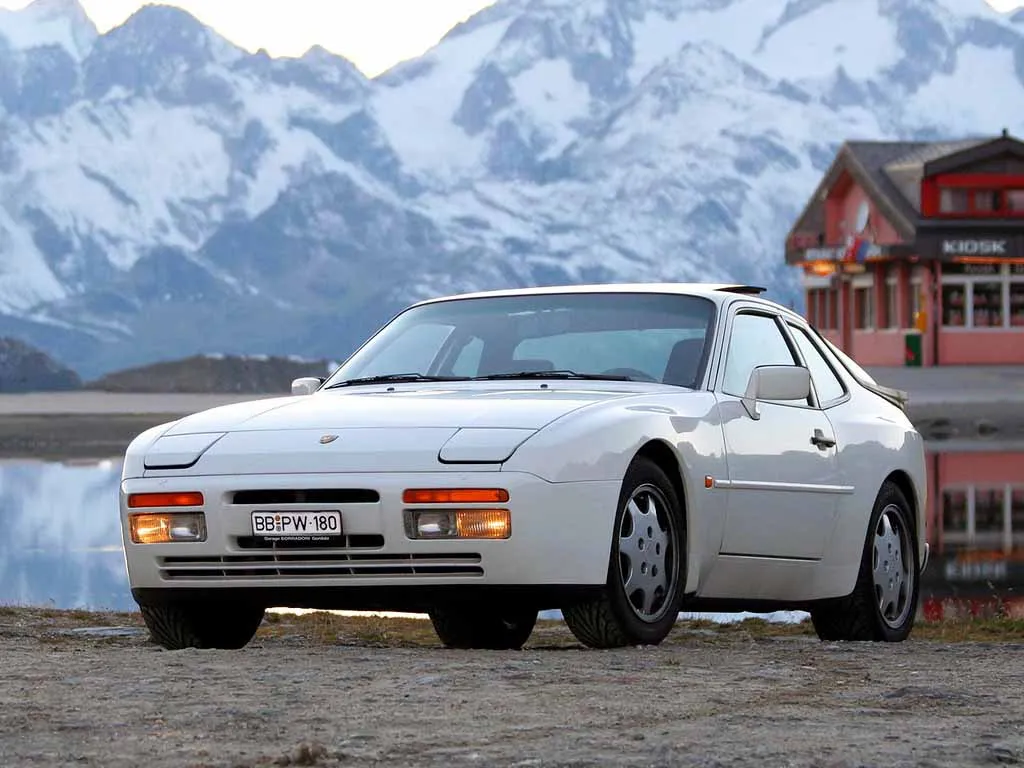
With a top speed of 130 miles per hour and 155 miles per hour, respectively, it was one of the fastest production cars of its time without costing a literal arm and a leg.
Both models were rear-wheel drive with 4-wheel independent suspension (which isn’t super rare now but was quite uncommon in the 80s) and even came with air conditioning. Fancy, right?
The Porsche 968
Next, we have the Porsche 968, which ran from 1991 to 1995 and was considered by many to be the successor to the 944.
Even if that isn’t necessarily true in every regard. The Porsche 968 came as a 2-door coupe or as a drop-top convertible and was home to a 3.0-liter engine capable of producing 236 brake horsepower.
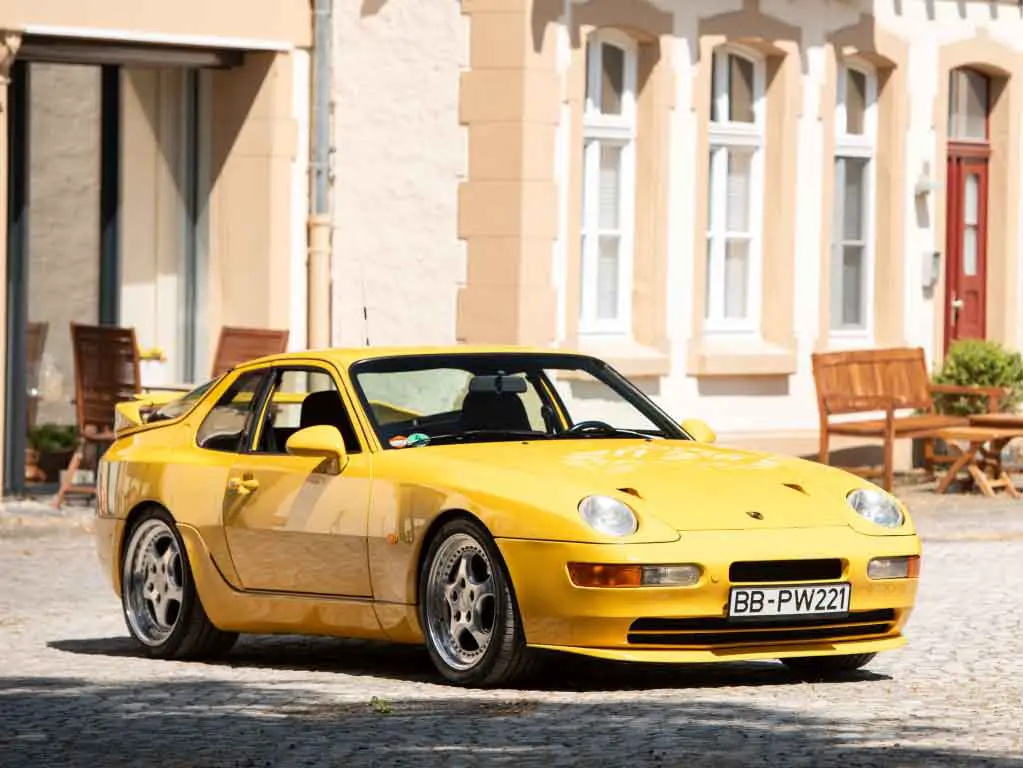
With either a 6-speed manual transmission or a 4-speed automatic, the Porsche 968 was fast, agile, and capable of getting into the high 160s (mph).
Just like the 944, the 968 is rear-wheel drive only and four-wheel independent suspension as well as modern, lightweight disc brakes and other smaller performance options as optional extras. It did not have a standard turbo upgrade as the 944 does.
The Porsche 944 vs 968 – Differences?
As you can tell from the specs, these cars that are (somewhat fairly) compared are not actually all that similar once you get under the hood.
For one thing, we should compare the standard 944 vs the 968 because they are both the standard model. Sounds obvious right?
But in actual fact, the turbo 944 and the standard 968 would make a fairer comparison in many ways. Regardless, the 968 has a bigger engine than both and can squeeze out a fair few extra miles per hour.
Since it’s newer, it also has access to modernized brakes as well as a better ECU for its 4-speed automatic. The 3-speed automatic of the standard 944 leaves a lot to be desired.
The Porsche 944 vs 968 – Which Is More Powerful
As we just established, the 968 is more powerful than both the standard and the turbo Porsche 944. But, it is worth noting that the turbo 944 and the standard 968 are pretty on par for the majority of their power curve.
What we mean by this is that while the 968 can get from 0-100 faster than the 944, once they are both at 100, they are crawling from 100 to their top speed. The only real difference between the 968 and the 944 is that the 968 crawls a little further.
This is especially prevalent with automatic transmissions. In case you couldn’t guess, a 4-speed automatic transmission is a lot less power-accurate in its climb from 0-top speed purely because it is nowhere near as adaptable as modern gearboxes.
The Porsche 944 vs 968 – Which Is Rarer?
According to Porsche’s own production numbers (which are often shockingly inaccurate, but there you go), there were about 163,000 Porsche 944 units produced over its entire lifespan.
In contrast, the production numbers for the Porsche 968 are estimated to be as few as 12,000 to 14,000 cars. This makes the Porsche 968 relatively more exclusive and harder to find than the Porsche 944 simply because there is less around in any market.
That being said, you also need to consider that within the Porsche 944 and 968 model ranges, there were different variants and special editions produced, which will likely be rarer and harder to come by, whether it’s a 944 or a 968.
For example, the Porsche 944 Turbo S and the Porsche 968 Clubsport are known to be limited editions and, therefore, quite hard to come by.
They are certainly out there, you just might struggle to convince their current owners to part ways with them!
If you are interested in buying a version of the 944 or 968 as an investment, you are probably going to want to aim for the 968 Clubsport as they are higher in demand as both a rarer car and a more driveable car.
The extra few years of youth make a big difference by virtue of it just being a nicer driving experience.
When investing in cars, it is best to buy cars that people want to own and drive. It doubles your chance of finding a customer 5, 10, or 20 years down the line.
Porsche 944 vs 968 Summarized
I know I’ve hit you with a ton of information, but here’s the facts summarized into an easy to read table:
| Feature/Aspect | Porsche 944 | Porsche 968 |
|---|---|---|
| Production Years | 1982-1991 | 1991-1995 |
| Body Style | 2-door coupe | 2-door coupe or convertible |
| Engine Capacity | 2.5-liter (Standard) | 3.0-liter |
| Brake Horsepower | Up to 163 bhp (Standard), 217 bhp (Turbo) | 236 bhp |
| Transmission | 5-speed manual or 3-speed automatic (Standard), 3 or 4-speed automatic (Turbo) | 6-speed manual or 4-speed automatic |
| Top Speed | 130 mph (Standard), 155 mph (Turbo) | High 160s (mph) |
| Drive Type | Rear-wheel drive | Rear-wheel drive |
| Suspension | 4-wheel independent suspension | 4-wheel independent suspension |
| Additional Features | Air conditioning (both models) | Modern, lightweight disc brakes and performance options (no standard turbo upgrade as the 944 does) |
| Comparison Based on Power | Turbo 944 is comparable to standard 968 for majority of power curve | More powerful than both standard and turbo 944 |
| Transmission Performance | 3-speed automatic is less power-accurate in its climb from 0-top speed | 4-speed automatic is more power-accurate but still not as adaptable as modern gearboxes |
| Production Numbers (approx.) | 163,000 units produced | 12,000 to 14,000 units produced |
| Rarity | More common | More exclusive and harder to find |
| Special Editions | Porsche 944 Turbo S (limited edition) | Porsche 968 Clubsport (limited edition, more in demand, and more drivable) |
| Investment Consideration | Less appealing for investment due to higher production numbers | More sought after for investment, especially the Clubsport version, due to rarity and a better driving experience |
Our Verdict On The Porsche 944 vs 968
You would be well within your rights to look at this blog post and think to yourself, “Well, the 968 is clearly the better car”.
And that might be true for most people. But for some, many Porsche enthusiasts included, there is something really special about the 944.
The shape, the seats, the engine, and the smell of petrol permeating through the cab make it more fun to drive.
Sure, you can’t go quite as fast. And sure, you aren’t quite as in control. But who cares? Driving feels fun and reckless, and sometimes that’s more important.

